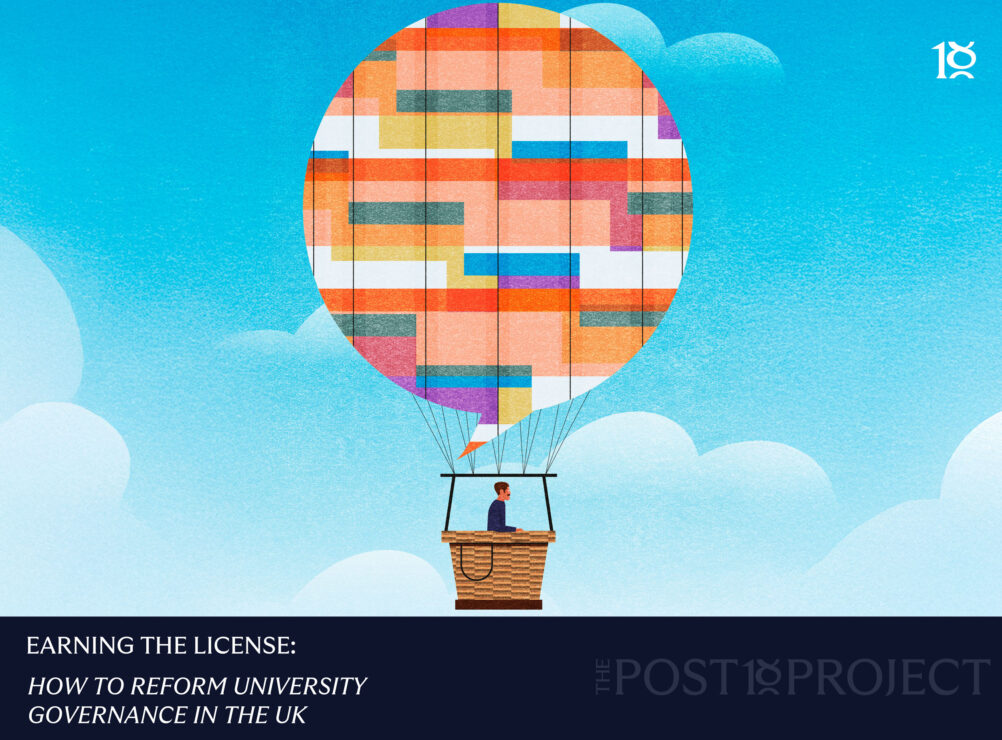One of the common characteristics of a large proportion of the headline-grabbing campus free speech cases is that they also involve equality, diversity and inclusion issues.
On one side of a given row you have students or staff saying things that are apparently legal but that students or staff on the other side of a row argue are harmful and in breach of a particular EDI policy or standard – or at least are said in a way which they argue represents a breach. This mix appears to be present, for example, in the Neil Thin case, the Lisa Keogh case, those cases at Essex and the David Miller case.
The mix is also in play in theoretical cases like this one in the Telegraph:
Cambridge University has taken down a website which said dons could be reported for “raising an eyebrow” at students. It comes just days after The Telegraph exposed the university’s new anonymous reporting site which stated that academics could be committing a “micro-aggression” if they gave backhanded compliments, turned their backs on certain people or referred to a woman as a girl.
Dons had accused the university of trampling on free speech, saying the reporting system would foster a culture “akin to that of a police state”. Cambridge’s vice-Chancellor Prof Stephen Toope is also facing a legal challenge over the contents of the website… Toby Young, general secretary of the FSU, wrote to the vice-Chancellor claiming that the website and policy “proposed a system of policing speech and everyday interaction” which would be “inconsistent” with its duty to uphold free speech.
And it’s also in play in cases like this, criticising perfectly sensible culture change guidance on microaggressions. Spiked! stalwart Frank Furedi, Professor of Sociology at Kent calls it:
Indoctrination rather than education… If you’re able to convince people that the issue of gender neutrality is a foundational norm then you’ve eliminated the age-old historical distinction between a man and a woman, which underpins virtually every social aspect. In effect you create a free-for-all.”
And Kent Professor of Politics and International Relations Matthew Goodwin says:
The lack of social conservatives in Britain’s universities has created a ‘mono-culture’ which causes academics to “hide or ‘self-censor’ their views due to fears of being ostracised”.
Let’s ignore for a minute the small number of cases here and the fact that three of the above are in Scotland (MPs like Julian Lewis, who’s been in the house for a quarter of a century, apparently haven’t noticed that higher education is devolved and so the government’s new Bill wouldn’t apply there – although the Scottish Conservatives are now calling for free speech legislation for universities in Holyrood).
A blended approach
As it stands, the Higher Education (Freedom of Speech) Bill would allow someone who suffered “adverse consequences” as a result of action or inaction by the university (or students’ union) which breached the duties to both bring a civil claim and use a new complaints scheme enforced by the Office for Students (OfS).
But given the mix in play, students on the other side of any of these conflicts are able to use university complaints procedures – which in England can then end inside an entirely separate but similarly worded complaints scheme run by the Office of the Independent Adjudicator (OIA).
Technically once the internal procedures are exhausted, students can choose which of the two schemes to use – but for them their issue isn’t a “freedom of speech” or “academic freedom” issue, it’s one of discrimination or harassment – or in some cases one of biased marking. And why would they pick a political appointment onto the OfS board to look at their case over the well established and scrupulously neutral OIA?
Much as the prospect of Independent Adjudicator Felicity Mitchell and Toby Young slugging it out is amusing in theory, in practice we are looking at a nightmare for the students and staff caught up in a case – and odd pressures on decision-makers in cases ploughing through case summaries from two different bodies. So whatever happens with the Bill, we are going to need to find a way for these processes to interact in some way.
Processing issues
We also do need to think about the process and its impact. Another characteristic of a number of the cases is the allegation that:
…the process is the punishment, even if they are ultimately exonerated, and the activists know it”
On the one hand that means considering carefully whether allowing a running commentary on case processes like this through the (social) media is ever wise. The Express writes up the Keogh case as “Woke Britain: Law student facing disciplinary action because she said women have vaginas”. But surprise surprise – there’s more in the mix.
A group statement from students at Abertay taking the gender, sexuality and law module in question said the complaint was made after “the cumulation of many instances” which were “interpreted by the majority of the class to be hostile and aggressive”. It’s a statement that’s been in the Courier but barely anywhere else in the coverage of the case.
The trouble is, even if “complaints should remain confidential” was a wise thing, this piece on Areo notes that many students have said that when they have tried to make formal complaints through regular channels, they have been routinely ignored:
This may have led them to feel that online petitions, open letters and social media posts are the only ways they can get their universities to listen to their concerns about professors’ views. If true, this suggests that the universities themselves bear some responsibility for the public nature of the onslaught against Thin and other academics. The students can be seen as young, disenfranchised individuals who have had upsetting experiences, and are acting out of frustration with university officials whom they feel have not done enough to respond to their concerns and distress.”
We also have to take seriously the “process is the punishment” allegation from the perspective of students and their studies. Academics will argue that media coverage of allegations themselves harms their work, health and reputation – but at least they’re still being paid even if suspended. Students harmed by the process in this way have no real prospect of pausing their course and no way of claiming back the financial and opportunity costs if it’s impacted by an allegation that turns out to be unfounded or is not upheld .
Is the internet the answer?
So how do we find a way through all of this? One thing I’ve noted on the site before is the apparent level of sophistication on offer from the Department for Digital, Culture, Media and Sport over a parallel set of “freedom from, freedom to” issues over on the internet. So it’s worth diving into the now published draft Online Safety Bill to see precisely how the government would require things to be handled.
Universities are not, of course, social media firms. But the similarities are interesting – partly because many of the cases in higher education actually play out over Twitter, Insta and Facebook itself – but mainly because of the way in which fairly autonomous individuals (staff and students) are able to generate expression “content” through the “platform” of the university. You can both argue they should be able to do that freely within the law, and you can argue that some of the “content” on that “platform” (or in the seminar room, etc) is either harmful to adults in and of itself, or harmful in the way it is being expressed.
In terms of what I might call the rhetorical umbrella being held over this Bill, what we have here is a piece of legislation aimed squarely at the “freedom from harm” side, with some legal caveats for “freedom to speak” (or, as expressed here, “freedom of expression”). Nevertheless the point is that when it comes to adults on the internet, the Bill doesn’t pick one of the sides of the moral see-saw – it integrates them.
As the notes to the Bill say:
Alongside illegal content and activity, there are increasing levels of public concern about online content and activity which is lawful but potentially harmful. This type of activity can range from online bullying and abuse, to advocacy of self-harm, to spreading disinformation and misinformation. Whilst this behaviour may fall short of amounting to a criminal offence, it can have corrosive and damaging effects, creating toxic online environments and negatively impacting users’ ability to express themselves online.
In other words – as well as the freedom of expression issues for the posters of lawful but potentially harmful content, there’s freedom of expression issues for those impacted by the toxic environments that that content can generate. That’s the same debate we see in all of these “mix” cases in universities.
In the Online Safety Bill, providers of “user-to-user” services must comply with the following duties in relation to each such service. First there is an “illegal content risk assessment duty” and a number of “illegal content” duties. These are straightforward – assess the risks of outright illegal material (terrorism, child sexual exploitation and abuse etc) appearing on your platforms and take steps to mitigate, and then have processes in place for the removal of outright illegal material.
Then there’s a series of duties to protect adults’ online safety, to protect rights to freedom of expression and privacy, to protect content of democratic importance and to protect journalistic content.
Adverse impacts
The “harm” thing is defined as content whose nature risks directly or indirectly having an adverse physical or psychological impact on someone of ordinary sensibilities. This could be by indirectly resulting in physical injuries or by directly or indirectly resulting in a significant negative effect on the mental state of an individual – and could include causing feelings such as serious anxiety and fear; longer-term conditions such as depression and stress; and medically recognised mental illnesses, both short-term and permanent.
Where harmful content would reasonably be assumed to particularly affect people with certain characteristics or belonging to a certain group, for example people with disabilities or people of a particular religion, the provider has to assume that someone encountering that content possesses those characteristics or belongs to that group.
Another section provides that content may be harmful due to the way in which it is disseminated, even if the nature of the content is not itself harmful, for example, repeatedly sending apparently innocuous content to a user could be bullying or intimidating. In determining whether content is harmful, a provider will also have to take into account how many users could be encountering the content on the service and how easily, quickly and widely the content can be disseminated on the service.
That’s all then balanced by freedom of expression and democratic importance duties. Clause 12 for example states that when designing and implementing their safety policies and procedures, all providers of regulated user-to-user services must have regard to the importance of protecting users’ rights to freedom of expression. And crucially the complaints duty – supervised by OFCOM which can hear appeals – then integrates the duties:
The complaints duty includes complaints about regulated content, complaints about a provider not complying with their safety duties or their duties in relation to freedom of expression and privacy, democratic content and journalistic content. This also includes complaints about action a provider has taken in relation to regulated content such as taking down or restricting access to that content and suspending or banning a user from using the service as a result of that content.”
Given the wider concerns about student (and staff) safety – including repeated exhortations from ministers for universities to get their house in order over duty of care issues – it hadn’t ought to be impossible for DfE to integrate freedom of expression issues into a wider duty of care duty on universities.
Clever and sensible
The sensible thing would be to set out similar risk assessment duties (which would in part reflect those in the OfS harassment and sexual misconduct statement of expectations), similar duties on freedom of expression and similar complaints handling standards – with an integrated approach ending up at the OIA. Statutory guidance could also help providers consider carefully where the line is between freedom of expression and student/staff protest on the one hand, and harassment on the other.
Another sensible thing would be for ministers to publically clarify their definition of a culture of free speech on campus in (and I can’t quite believe I’m typing this given the National Trust stuff) a similar way to that that Oliver Dowden has attempted – yes to challenging ideas, but also yes to the freedom to protest and the need to create non-toxic environments where people feel free to express themselves, especially if they’re marginalised.
A clever thing would be to consider how we might, carefully and calmly, reconcile rather than fuel what is increasingly looking like a bitter intergenerational conflict over what is and isn’t harmful. Graphs like this from the King’s Policy Institute “Culture Wars” report tell us that legislation that looks more about lecturing the young on how wrong they are than it is about the protection of freedom is unlikely to do anything other than fuel defensiveness and conflict. That will almost certainly have the opposite effect to that intended, and will have wider and potentially profound implications for intergenerational solidarity when the relative economic position of the young and the old is already stretched beyond previously imaginable limits.

But I worry that none of that will happen. For this government and its excitable MPs, largely elected by people near the bottom of that table above, better law and more sensible definitions run the risk of being seen as a climbdown by the right-wing press – a “snowflakes’ charter” giving into the “woke mob” allowing “cancel culture” to take hold like knotweed, as their friends at Spiked! pretend that there’s no issue on campus or in society with racism, sexism, transphobia or any other type of harassment or discrimination that can’t all be fixed by an hour at the debating club.
Ironically, given the average age of its members, it may now take the Lords – who tend to be less worried about social media clips circulating of their contributions to debates – to both clock and fix the problem with the higher education Bill.














Ah the ‘culture wars’ report, this item from ‘the conversation’ covers more useful ground on that: https://theconversation.com/culture-wars-uncovered-most-of-uk-public-dont-know-if-woke-is-a-compliment-or-an-insult-161529
As for the rest, Stephen Fry covers much of it: “It’s now very common to hear people say, ‘I’m rather offended by that.’ As if that gives them certain rights. It’s actually nothing more… than a whine. ‘I find that offensive.’ It has no meaning; it has no purpose; it has no reason to be respected as a phrase. ‘I am offended by that.’ Well, so fucking what.”
The presentation of the free speech issue as a generational one is largely false and self serving. It is true that some of those who campaign to censure Neil Thin and Kathleen Stock for their commonly held views are young students. But often the prime movers are as middle aged as Jim and myself. Most students are not asked their views, and some may well feel reticent to give them. Lisa Keogh found out that speaking frankly, and moderately as it happens, with common sense and commonplace views than contradict those described by some as ‘woke’, may not be advisable… Read more »
“Ironically, given the average age of its members, it may now take the Lords – who tend to be less worried about social media clips circulating of their contributions to debates – to both clock and fix the problem with the higher education Bill.” A rather casual but in its way telling final argument. Casual: The average age of MPsin the Commons is 50 and the average age of the Lords is 70. But of the 900 or so Peers, only around 770 are “active members”. Since the inactive Lords include members who are 90+ (there is no retirement age),… Read more »
I’m so deeply frustrated by all the reporting surrounding these “free speech issues” in universities, which let’s be honest is mostly centred around the discussion of trans women. Almost every article runs with the same narrative given by those “defending free speech” pretty uncritically, at best pointing out “it’s more complicated than that”, but on the whole largely failing to point out that the people whose free speech is in question are not just “accused of being bigots”, they ARE saying bigoted things. We’ve basically got a whole host of people running around shouting about their “freedom of speech” because… Read more »